Below st is your starting values except we have used Epsup=1 to avoid degeneracy at 0. fo is the formula. To prevent raising negative numbers to a power we have replaced Epsup with sqrt(Epsup^2) and similarly for Epsdn -- this adds the assumption that Epsup and Espdn cannot be negative. (This would be the same as using abs(Epsup); however, nlxb does not have abs in its derivative table.) Next use nls2 to generate values on a grid between the boundaries st/10 and 10*st. nls2 will generate these and return an "nls" object with the best one found. Now use that as the starting values for nlxb of the nlmrt package. It handles difficult problems bettter than nls. nlxb does not return an "nls" object (although the package does have wrapnls which runs nlxb followed by nls but then we don't get the direct output from nlxb) so feed that through nls2 again to create an "nls" object allowing us to use the fitted method. We plot the resulting fit.
library(nlmrt)
library(nls2)
st <- c(Epsup=1, Bup=1, Epsdn=10, Bdn=-5)
fo <- y ~ (1/(1+sqrt(Epsup^2)/x)^Bup)*(1/(1+sqrt(Epsdn^2)/x)^Bdn)
fit.nls2 <- nls2(fo, start = data.frame(rbind(st/10, 10*st)), alg = "brute")
fit.nlxb <- nlxb(fo, data = data.frame(x, y), start = coef(fit.nls2))
giving the following:
> fit.nlxb
nlmrt class object: x
residual sumsquares = 171.2 on 11 observations
after 19 Jacobian and 25 function evaluations
name coeff SE tstat pval gradient JSingval
Epsup 10.7464 10.95 0.9814 0.3591 6.855e-05 1584
Bup 1.15049 0.5928 1.941 0.09345 0.001839 120.2
Epsdn 642.754 908.5 0.7075 0.5021 -1.298e-06 1.406
Bdn -1.13885 0.6315 -1.804 0.1143 0.004964 0.005443
and plotting to visually assess the fit:
fit.nlxb.nls <- nls2(fo, start = coef(fit.nlxb))
plot(y ~ x)
lines(fitted(fit.nlxb.nls) ~ x)

Note: We used this input:
via_data <- data.frame(Concentration = c(0.197, 0.398, 0.792, 1.575,
3.154, 6.270, 12.625, 25.277, 25.110, 49.945, 74.680),
Viability = c(100, 94.62, 96.21, 87.53, 80, 62.22, 39.11,
30.80, 30, 22, 2.56))
x <- via_data$Concentration
y <- via_data$Viability
